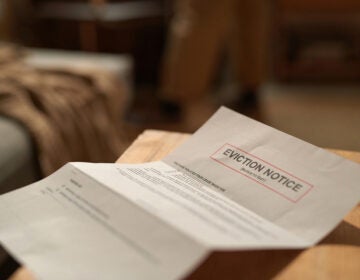How media shaped Philly’s flash mobs and, in turn, teen rules
Not too long ago, Philadelphia made national and even international news because of violent flash mobs — at least, that what’s the media called the phenomenon of large groups of young people coming together in the city through social media, with things sometimes getting out of hand.
The violent episodes had all the right ingredients. And at the time, there was a lot of coverage — from local outlets to the big dogs, like the New York Times and CNN.
“You can see from media’s point of view, this is an unusual phenomenon,” said Frank Farley, a psychology professor at Temple University and former president of the American Psychological Association.
“If a flash mob occurs and there’s absolutely no media coverage, it’s not going to gain a lot of attention,” said Farley. “In a sense, the media was doing its job, but in the process of course it heightens interest in it around the country. It makes it a larger phenomenon than kids getting together and having some fun, and sometimes what you get with this kind of coverage, you get imitation.”
Flawed coverage?
Jan Fernback, media studies professor at Temple, believes that most people learned about them through the news and that the coverage was flawed.
“There was fear mongering surrounding the notion of violent teens, frightened citizens, fear of what would happen to tourism in city, and untold negative possibilities surrounding the development of these new social media technologies,” said Fernback.
While Fernback acknowledges the real violence that came with some of these mobs, the stories left out a key voice.
“I felt mainstream media coverage at the time focused so much on teens as out of control, violent, crazy, people who wanted to cause harm and who were inherently violent and in actuality, what was missing from media coverage was the perspectives of these teens.”
Teen perspective
Looking for those voices, we interviewed teens on the street in Center City and heard mixed reviews. Some thought the media got the story right. Others thought the media exaggerated, focused too much on the negative aspects, and didn’t provide solutions for how to keep flash mobs peaceful.
“It just typecast all African-American young adults are going to be flash mobbers,” said Quinton Russ, who was a high school senior during the heat of Philadelphia flash mobs in 2010. He didn’t participate, but he says that the extensive news coverage fueled the events. “A lot of people joined flash mobs and wanted to do it just to get attention, because they knew they were going to be on news.”
Psychology professor Frank Farley agrees.
“It’s kind of a thrill value, not just of doing the event, but having it covered and broadcast and potentially nation and all over world,” he said.
Javier Morris doesn’t buy that argument. He was in high school back in 2010 and part of the Philadelphia Student Union. He says the media missed a key point — that for most young people, with not many places to hang out or things to do in the city, flash mobs were just an exciting thing to check out, no violence or harm intended. And like every other young person I talked to, Morris feels that life after flash mobs was strikingly different.
“It got to the point where you can’t be with three or four friends without adults being like, ‘Oh what are they doing?’ and ‘Oh where are they going?'” said Morris. “It did feel really comfortable because it was just like I have no intention of doing anything bad, so I would like it if you didn’t look at me as if I was about to.”
In response to the flash mobs, the city imposed earlier curfews for teens and some shops established policies barring teens after 3 p.m. if they aren’t accompanied by an adult.
To show the public that young people can come together in a positive, organized way, Philadelphia Student Union organized two non-violent flash mobs in Center City in 2010.
“We went right into the middle of Rittenhouse Square and it was a nice day a lot of people around,” remembers Morris. “So when they started seeing bunch of students started coming from different directions, you could already tell they had a bad feeling in the back of their heads. But when we flipped the script on them and showed our organizing stuff, we had their whole attention.”
Those positive gatherings didn’t go viral or make national headlines — which goes to show, that maybe those of us in the media are missing a big part of the story.
We got the idea to update Philly flash mobs thinking about tonight’s airing of “The Central Park Five” on WHYY TV. The Ken Burns documentary tells the story of five teens wrongfully convicted of raping a woman in the “Central Park jogger case.” It airs at 9 tonight.
WHYY is your source for fact-based, in-depth journalism and information. As a nonprofit organization, we rely on financial support from readers like you. Please give today.




